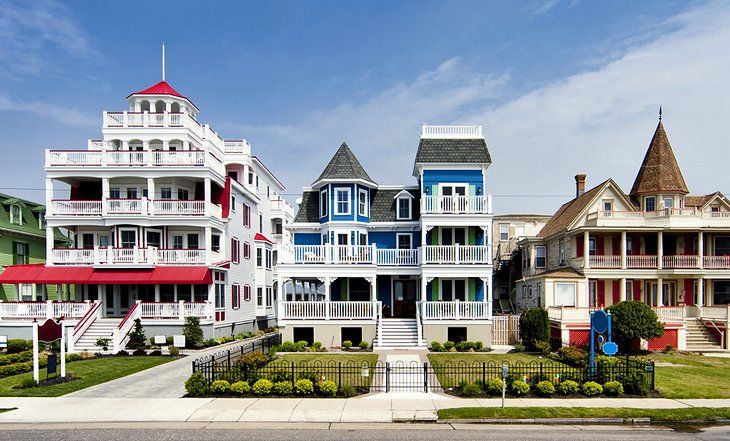
Cape May Historic District
The country's best-preserved 19th-century seashore resort, Cape May is a registered National Historic Landmark with over 600 Victorian-era houses in its 30-block downtown area. These charming summer cottages were designed with covered porches for enjoying the sea breezes, and decorative elements such as "gingerbread" trim, "wedding cake" details, turrets, and gables.
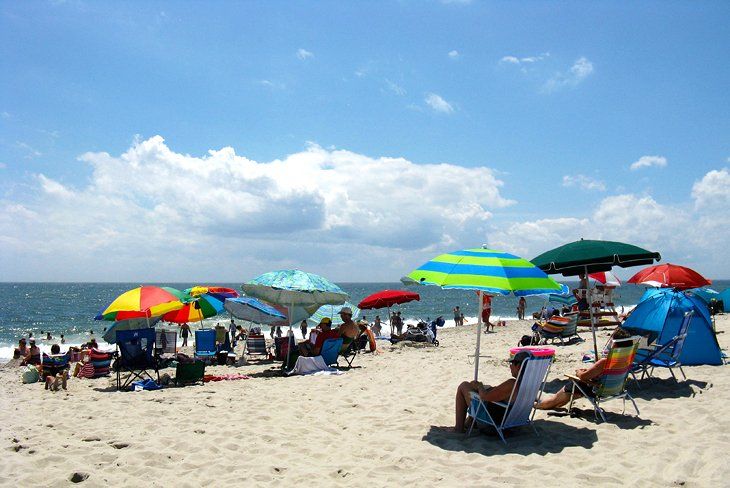
Sandy Beaches
Cape May is nestled between the Atlantic Ocean and Delaware Bay at the southernmost tip of New Jersey. The shoreline includes 2.5 miles of sandy beaches (along Beach Avenue), which are some of the most beautiful on the Eastern coastline.
The beaches of Cape May are family-friendly and equipped with lounge chair and sun umbrella rentals. The city keeps the beaches clean and well-maintained, so that visitors can appreciate the fine white-sand shores. Most beaches are located near public restrooms, shops, snack bars, cafés, and restaurants.
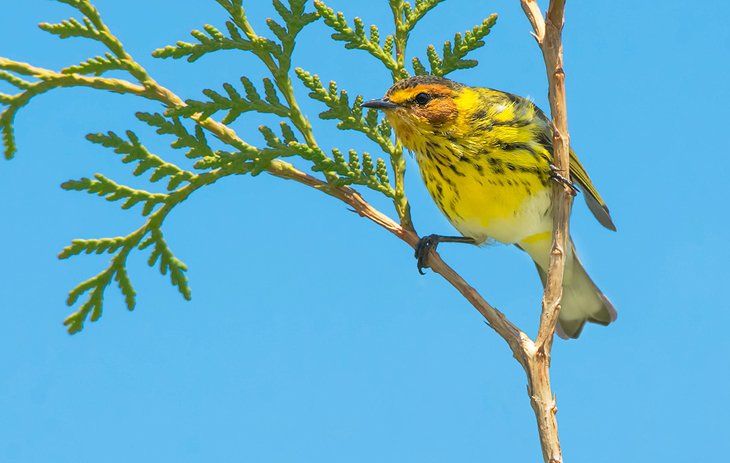
Bird-Watching
Cape May is North America's premier birding destination, thanks to its location on migratory paths and diverse habitat of marshes, ponds, swamps, grasslands, and forests.
For over two centuries, the Cape May environment has been appreciated by bird-watchers, including John Audubon. Around 450 bird species have been spotted at Cape May such as warblers, sandpipers, oystercatchers, plovers, orioles, and summer tanagers.
Top locations for birding are in West Cape May (the rural area outside of the historic town): South Cape May Meadows, the Cape May Hawkwatch, and Higbee Beach Wildlife Management Area. Peak migration periods occur in May (for shorebirds) and in September (for songbirds).
The Cape May Bird Observatory in West Cape May (Northwood Center, 701 East Lake Drive) is an excellent resource for birders or anyone interested in joining a bird-watching walk while visiting Cape May. Open Tuesday though Sunday, the Cape May Bird Observatory offers a year-round program of activities such as weekly walks.
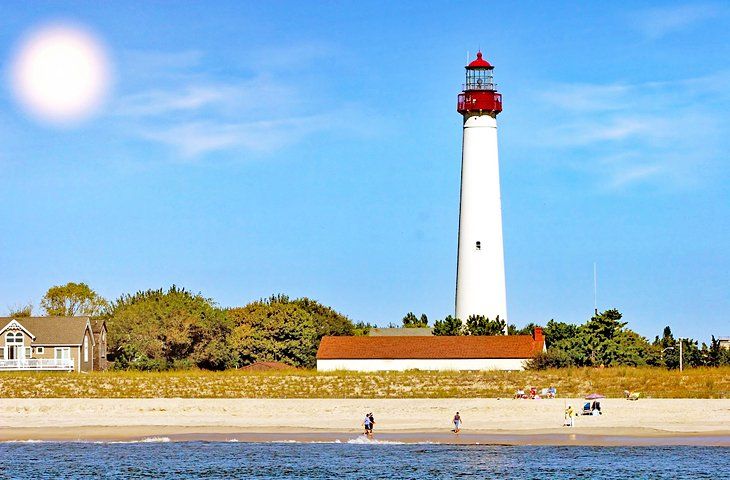
Cape May Point State Park
Cape May Point State Park is a protected stretch of shoreline, sand dunes, coastal marshland, ponds, and forest habitat with an environmental center and museum. The park's main attraction is the Cape May Lighthouse, built in 1859. Visitors may climb (199 steps) to the top of the lighthouse tower to admire sweeping panoramas of the Atlantic coastline and the Delaware Bay.
Several hiking trails wind through the park, affording a chance to spot wildlife or migrating birds. The Monarch Trail was named after the monarch butterflies that are attracted to wildflowers here in the fall, while the Plover Trail is a wonderful path for viewing plovers, oystercatchers, and other shorebirds.
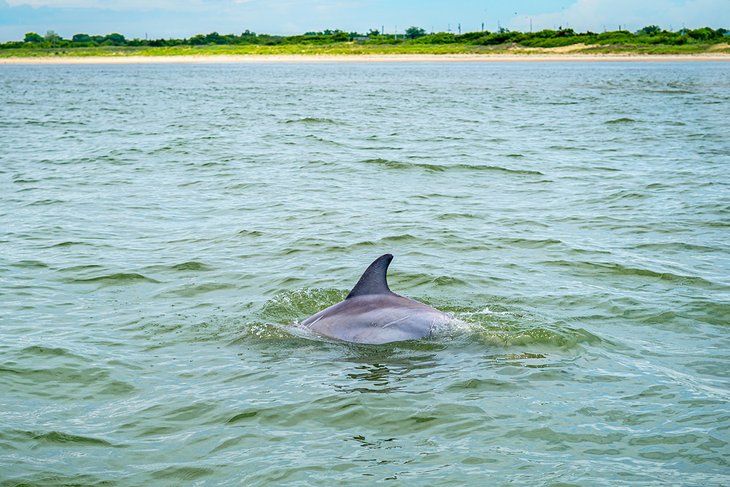
Whale and Dolphin Watching Cruises
Whales and dolphins can be spotted in the Atlantic Ocean and the Delaware Bay, not too far (within 10 miles) from the Cape May coastline. It's a thrilling experience to see these amazing sea mammals up close, while sailing through the deep blue waters.
Several local companies provide whale-watching cruises. Passengers have a chance to see humpback whales, finback whales, and minke whales, as well as pods of bottlenose dolphins.
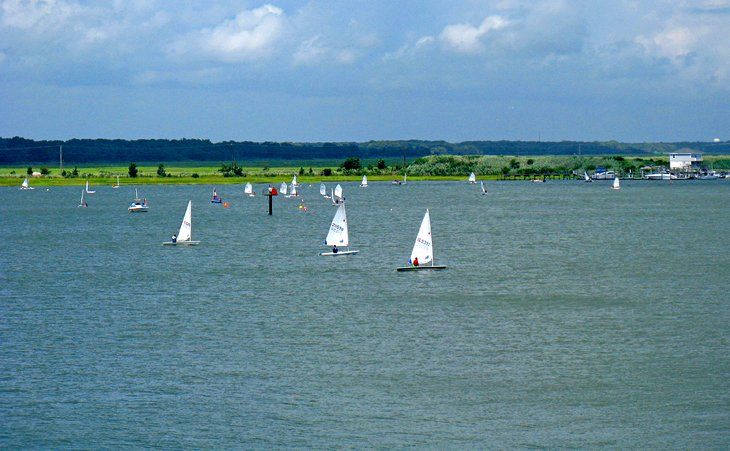
Cape May Harbor
This sheltered harbor is an idyllic scene of sailboats and yachts gliding through gently rippling turquoise waters. There is a tiny beach in a quiet cove with a few picnic tables.
Overlooking the harbor, the New Jersey Audubon's Nature Center of Cape May presents educational exhibits and hands-on activities designed to inspire kids' interest in nature. The nature center also has an observation tower, gift shop, picnic area, and a lush flowering garden landscaped to attract butterflies.
Families with young children will have fun going on a Harbor Safari, an educational outing organized by the New Jersey Audubon society. Kids learn about the coastal ecology and local sea creatures.
The Cape May Harbor is also a great place for water sports. Kayaks and paddleboards can be rented from Aqua Trails near the nature center. Aqua Trails also offers tours such as a Sunset Kayak Tour and a Full Moon Kayak Tour.

West Cape May
Beyond the Historic District of Cape May is a quiet rural community with many small farms. Dating back to the 1600s, European colonists cultivated this area for agricultural use. In the 20th century, the land was used for the Cape May dairy, as well as for lima bean and soy bean farms.
In keeping with its heritage, a Lima Bean Festival takes place at Wilbraham Park in West Cape May every October.
Tourists will also enjoy cycling in West Cape May; it's an easy (and scenic) bike ride from Cape May's center. Bird-watchers will appreciate the observation decks and walking trails at South Cape May Meadows, which includes 200 acres of protected habitat for birds and other wildlife.
Built on a historic property, Beach Plum Farm is a 62-acre farm that supplies produce to local restaurants. Beach Plum Farm grows over 100 varieties of fruits, vegetables, herbs, and flowers.
The property's rustic-chic country market sells hand-picked fresh produce harvested from the farm's fields and gardens, while the Farm Kitchen serves breakfast and lunch made with ingredients from the farm.

